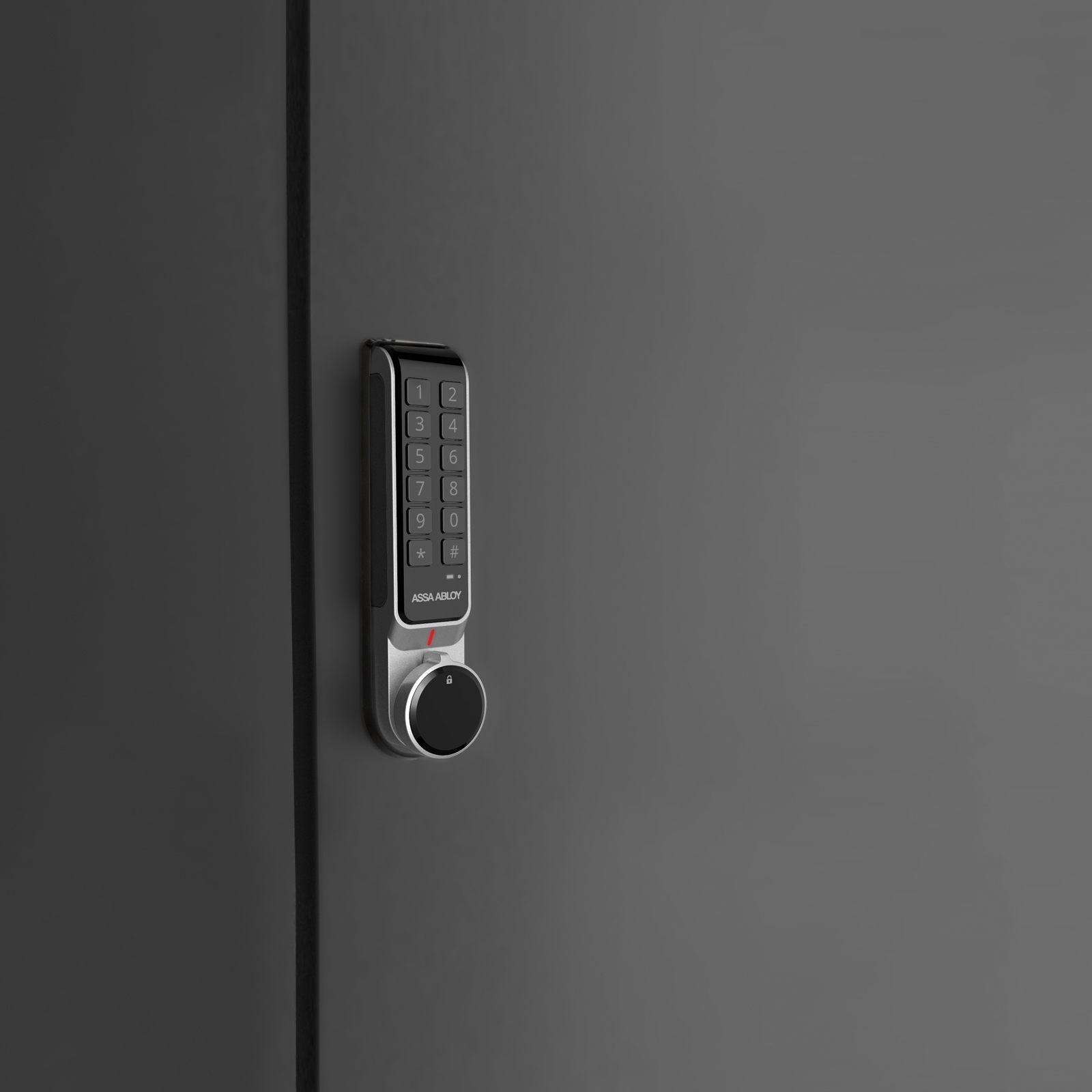-
Australia
Copyright © 2025 Powered by BCI Media Group Pty Ltd
Confirm Submission
Are you sure want to adding all Products to your Library?
Contact Detail

Security is a priority in hospitals, as well as in any healthcare facility. The goal is to reduce common security risks by implementing technical and organisational solutions that follow industry standards. Access control systems are an important aspect of security in all industries, helping to manage the flow of people and protect both people and assets within facilities.
Definition of access control systems and how does it work?
There are 2 components in an access control system: hardware and software. Hardware consists of physical components like access cards (RFID, smart cards, proximity cards), cam locks, smart door hardware, controllers, and portable readers.
The software allows for the assignment of access control credentials, ensuring individuals have the necessary access to designated areas.
When a smart card or mobile credential is waved over the reader as a key lock, it sends a message to an access controller.
The access controller then authenticates the credential to verify the user's information to enter. If confirmed, the access controller sends a signal to the door lock to open.
Hospitals meet specific difficulties in managing access rights due to their special settings, such as the continuous flow of patients, visitors, and staff, along with the requirement to safeguard sensitive areas like pharmacies, cabinet doors, community clinics, patient records' cabinets, and equipment rooms.
Manage access rights in hospitals
Here are strategies hospitals can employ to manage access rights more effectively:
1. Implement Role-Based Access Control (RBAC)
Definition: Role-based access control (RBAC) is a framework centered on specific roles, each with corresponding permissions. RBAC helps regulate access levels based on individual roles to ensure proper access to areas and information. This reduces the possibility of unauthorized access into restricted areas.
Benefit: The benefit of this system is improved security through restricting access to specific areas based on job functions.
The initial step involves assessing your current situation. It is important to have a clear understanding of 2 specific things:

Resources for the first step may consist of various types of data, ranging from complete datasets to specific databases, tables, and views, as well as individual attributes, rows, and objects.
Additionally, any actions or functions related to these resources can also be included.
RBAC is based on the principles of least privilege and separation of duty, ensuring that users only have access to the necessary data for their tasks.
It is necessary to determine the data we have before making decisions on access rights.
It is important to assess how your resources align with current workflows. One possible scenario is transitioning from a traditional keying system to a smart access solution for operational management. Employees may feel content with a specific process or action.
However, it may be discovered that the admin team has access to rooms or data that are unnecessary for their roles. As an example, they only require access rights to patient records cabinets, not the equipment room.
The goal here is to establish a balance between security and accessibility by understanding the resources and user interactions, allowing for proper authorisation procedures to be implemented.
2. Utilise Advanced Model for Access Control Sytem
Definition: Consider investing in access control systems with multi-factor authentication, biometric scanners, and mobile credentials to enhance security and mitigate sequential attacks. If an intruder obtained a previously used access control credential in the system, they will not be able to determine a currently authorised credential.
These technologies offer advanced user access control compared to traditional key locks or common access cards, enhancing security and efficiency.
Benefit: This technology reduces the risk of lost or stolen keys or proximity cards, and enables real-time adjustments to access rights.
Why More Businesses are Switching from Smart Cards to Mobile Credentials
Mobile credentials serve a variety of purposes, such as virtual library cards and employee ID badges. There are various benefits available for end users and organizations looking to modernise access control credentials:

Research conducted by Gartner suggests that businesses that implement advanced access control system solutions experience a 15% rise in visitor satisfaction and retention. This guest experience reflects well on the hospital brand and demonstrates the business' dedication to security and professionalism.
Furthermore, compliance with security standards is non-negotiable. Advanced access control systems help businesses comply with industry-specific regulations such as GDPR, HIPAA, and PCI DSS by restricting access rights and logging data.
These compliance measures protect sensitive information and mitigate common security risks associated with data breaches.
A survey by PwC found that organisations that comply with regulatory standards experience a 20% reduction in regulatory fines and penalties. This financial benefit highlights the importance of investing in compliant security solutions.
3. Attribute-based access control system (ABAC)
Attribute-based access control (ABAC) is an authorisation methodology that enforces policies based on characteristics such as department, location, manager, and time of day. It is also known as policy-based access control (PBAC) or claims-based access control (CBAC).
Benefit: The attribute-based access control authorisation model is flexible, easy to use, and scalable.
ABAC utilizes if-then statements to establish access rights based on the user, request, resource, and action.
Different levels of access are granted based on the role of the individual making the access request. Doctors are given read-write access right to the customer medical profile, while administrators are only allowed to view certain details of the customer profile.

Account-based access control offers dynamic, context-aware security to address the growing complexity of IT requirements. ABAC can be used in various scenarios, such as:
4. Incorporate Real-Time Location Systems (RTLS)
RTLS is a technology that can track the location of staff, patients, and equipment. This technology helps regulate access rights by allowing only authorized individuals to enter specific areas.
Benefit: The benefits include improving patient safety, staff efficiency, and equipment utilisation, as well as securing restricted areas.
RTLS utilizes a combination of hardware, software, an communication technologies to determine the real-time location of tagged items or individuals within a specified area.
An object being monitored by an RTLS system is identified by a tag attached to it, allowing it to be located by the system's infrastructure.
Another approach could involve utilising devices with location awareness capabilities that can accurately determine and report their own location to the infrastructure, such as cell phones for GPS tracking purposes.
RTLS technology provides specialised teams with full visibility of equipment location and status. One benefit of RTLS is its capability to offer real-time location information, enabling organizations to track the movement and status of assets or individuals immediately.
The current data allows decision-makers to act quickly, improve operational processes, and increase overall situational awareness.
5. Adopt Visitor Management Systems
Definition: Implementing visitor screening and tracking access during operation to issue temporary access control credentials based on visit purpose and duration.
Benefit: This system simplifies visitor access while ensuring security measures are in place for monitoring facility entry and exit.
The healthcare industry has been one of the many industries to adopt visitor management software during the COVID-19 pandemic, due to its focus on safety and security. The healthcare industry receives numerous visitors on a daily basis.
The majority of visitors include patients, their families and friends, vendors, contractors, and staff members. Managing visitor traffic in healthcare facilities can be difficult due to the high volume of people entering and exiting daily.

Healthcare facilities are subject to stricter regulations and restrictions compared to other industries due to the heightened risk of COVID-19 transmission among patients and staff.
While hospitals have security protocols in place, monitoring all visitors and patients can be a challenging task for staff. For example, the common paper sign-in sheets can be inefficient and time-consuming.
Healthcare professionals have limited time to spare for administrative tasks amidst their daily responsibilities. Visitor access management software plays a key role.
A visitor management software allows healthcare facilities to screen visitors, issue badges, collect check-in and out times, and enforce visiting hour policies.
Additionally, a visitor management system can assist in guiding visitors to the appropriate areas of the healthcare facility.
6. Regularly Policy Review and Audit Access Permissions
Definition: Regular reviews and audits of access rights and access requests should be conducted to ensure they are current and align with current roles and responsibilities.
Benefit: One benefit is the prevention of excessive access rights buildup, which helps reduce the risk of internal threats and ensures compliance with healthcare regulations.
Regular access control network audits, also referred to as user access controls, aid organizations in identifying unnecessary permissions and mitigating risks such as unauthorized access request to sensitive areas or information.
When employees take on new tasks and projects, they require additional access rights to systems. Access controllers may sometimes neglect to revoke permissions once they are no longer needed. As a result, users gradually acquire additional access rights over time.

Why is this a problem?
The amount of information accessible to users increases the common security risk if their account is compromised or if they become an insider threat. User access control reviews are important for hospitals to maintain secure premises by preventing privilege creep and limiting access to digital assets strictly as needed.
ASSA ABLOY Opening Solutions team will show you how to make user access control reviews swift and painless in order to navigate the access control matrix, and maximise your security benefit with minimal effort.
7. Integrate Access Control with Other Security Systems - Digital Cam Locks & Cabinet Locks
Definition: Integrate access control systems with video surveillance, cabinet locks, digital cam locks, intrusion detection, and emergency response systems to create a comprehensive security solution and mitigate common risks.
Benefit: Implementing extra layered security, including cam locks installation can enhance successful authentication and response capabilities.
ASSA ABLOY's digital cam lock range is widely recognised as the industry benchmark. The ML55 Series is designed for government, hospitals, clinics, care homes, health clubs and institutional organisations with high demands.

The ML55 Series digital cam lock offers advanced features for locking lockers and cabinets in a wide selection of applications, surpassing standard cam locks. In addition to the time-opening function for added convenience, this cam lock also includes a Digital PIN Keypad with features suitable for locker or cabinet applications at:
Reach out to our team today for more information on our digital cabinet cam lock.
8. Train Staff on Security Protocols
Definition: Regular training sessions on security protocols, including access control policies, services of authorization, and access control lists, are necessary for upholding hospital security.
Benefit: This policy ensures that all staff members understand their responsibilities in access control, decreasing the likelihood of human errors.
Physical security is essential for protecting an organization's assets. Assets can include a variety of items such as hardware, software, data, and tangible objects like buildings and vehicles.
Physical security measures are essential for safeguarding assets against theft, damage, or destruction. Creating a secure environment helps prevent financial losses from theft, sabotage, or unauthorised access.
One of the most critical aspects of physical security is access control. Access control systems can help limit access to sensitive areas of your organization, such as data centres, equipment rooms, and executive offices.
Access control systems encompass a range of methods, including traditional locks, RFID cards, smart keys, and biometric systems like fingerprint or facial recognition technology, for example the faced cam locks. Restricting access to sensitive areas can help minimise the possibility of theft, sabotage, or unauthorised entry to your organisation's resources.
Final Thoughts:
The strategies require planning and investment to enhance security and efficiency in hospital operations and prevent sophisticated attacks. Reach out to our team today to discuss more about a future-proofed access control system that works.



